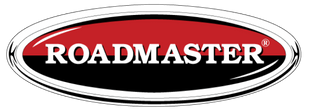Towing safely is about making wise choices — both in the products you choose (Towing system components — what you need to tow), and in the way you use them. Below is a handy checklist of suggested procedures you should follow before your next towing adventure. For a copy that you can print and take along for the ride, click here.
Towing Checklist
• The baseplate is undamaged, and all nuts and bolts are tightened.
• The tow bar is undamaged and properly connected, with all pins and clips properly secured.
• The safety cables are connected to both vehicles, frame to frame, and crossed under the tow bar, on the motorhome side.
• The electrical cord is connected between the two vehicles, and the towed vehicle’s brake lights, running lights and turn signals are functioning properly.
• Disconnect the battery and/or pull fuse(s), if recommended by the owner's manual.
• The supplemental braking system has been tested and is properly connected.
• The towed vehicle’s transmission is in the proper gear. If necessary, is the driveshaft disengaged?
• The towed vehicle’s ignition key is turned to the "tow" position.
• The towed vehicle's steering is unlocked, and free to turn.
Safe Towing Practices
• Follow the manufacturer’s instructions to prepare the vehicle for towing.
• All towing equipment must be rated at a higher weight capacity than the combined weight of the towed vehicle and all its contents.
• Keep the tow bar clean and well-lubricated.
• The tow bar must be within the “Safe Zone” — motorhome-mounted tow bars must be no more than three inches above or below level. Car-mounted tow bars must be approximately level.
• Always use safety cables when towing and make certain that the cables are the correct length — there must be enough slack to allow for sharp turns; however, the cables must not hang down to the extent that they drag on the ground. If you add an extension to the motorhome hitch receiver, the safety cables must be long enough to accommodate the additional distance.
• Before every trip, take the time to inspect the motorhome and the towed vehicle. Do a complete walk-around — check all components for visible signs of wear or distortion.
• Before towing a vehicle for the first time, check the turning radius. Make certain that there is adequate clearance between the front of the towed vehicle and the rear of the motorhome to allow for sharp turns.
• Never back up the motorhome with the towed vehicle still attached.
• Never tow a vehicle with one of a comparable weight — the towed vehicle’s weight should never exceed 40 percent of the towing vehicle’s weight.
(These guidelines are intended as a general reference. Refer to the owner’s manuals — for the motorhome, the towed vehicle, and all towing system components — for complete information).
